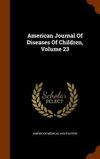Seasonal variation in growth during growth hormone therapy.
American journal of diseases of children
Pub Date : 1991-07-01
DOI:10.1001/ARCHPEDI.1991.02160070065023
引用次数: 45
Abstract
Seasonal variation in growth of normal children has been well described, although the mechanism by which it occurs has not been elucidated. The growth of 52 growth hormone-deficient children treated with synthetic human growth hormone was analyzed. A similar seasonal variation was observed, with mean (+/- SEM) peak growth occurring in the summer (8.2 +/- 0.3 cm/y) and winter (7.7 +/- 0.2 cm/y), and trough growth occurring in the autumn (6.9 +/- 0.3 cm/y). Forty-seven percent of subjects grew minimally during the autumn, and only two children showed peak growth in that season. Individual variations between maximal and minimal growth seasons amounted to 3.5 +/- 0.3 cm/y. The seasonal pattern was statistically significant for the group as a whole, for the prepubertal subgroup, and for the boys. The variation persisted when the first year of treatment was excluded to avoid bias of the initial growth spurt. The season of onset of therapy did not affect total growth during the first year. The demonstration of a seasonal pattern in growth of these children suggests that the seasonal variation may be mediated by peripheral rather than central factors. Paired clonidine-provoked growth hormone levels and an integrated concentration of 24-hour growth hormone levels and serum levels of insulinlike growth hormone I measured in a control group of normally growing children were also analyzed and showed no seasonal variation. This further suggests that peripheral rather than central factors are responsible for the seasonal variation in children's growth.生长激素治疗期间生长的季节性变化。
正常儿童生长的季节性变化已被很好地描述,尽管其发生的机制尚未阐明。对52例生长激素缺乏儿童应用合成人生长激素治疗后的生长情况进行了分析。季节变化相似,平均(+/- SEM)生长高峰出现在夏季(8.2 +/- 0.3 cm/y)和冬季(7.7 +/- 0.2 cm/y),低谷出现在秋季(6.9 +/- 0.3 cm/y)。47%的研究对象在秋季发育最低,只有两个孩子在秋季发育最高。最大生长季和最小生长季之间的个体差异为3.5 +/- 0.3 cm/y。季节性的模式在统计上对整个组、青春期前亚组和男孩来说都是显著的。当排除治疗第一年以避免初始生长突增的偏差时,这种差异仍然存在。治疗开始的季节对第一年的总生长没有影响。这些儿童生长的季节性模式表明,季节性变化可能是由外围因素而不是中心因素介导的。我还分析了在正常生长的儿童的对照组中测量的可乐定引起的配对生长激素水平和24小时生长激素水平的综合浓度以及胰岛素样生长激素的血清水平,并没有显示出季节变化。这进一步表明,是外围因素而不是中心因素导致了儿童生长的季节性变化。
本文章由计算机程序翻译,如有差异,请以英文原文为准。
求助全文
约1分钟内获得全文
求助全文

 求助内容:
求助内容: 应助结果提醒方式:
应助结果提醒方式:


